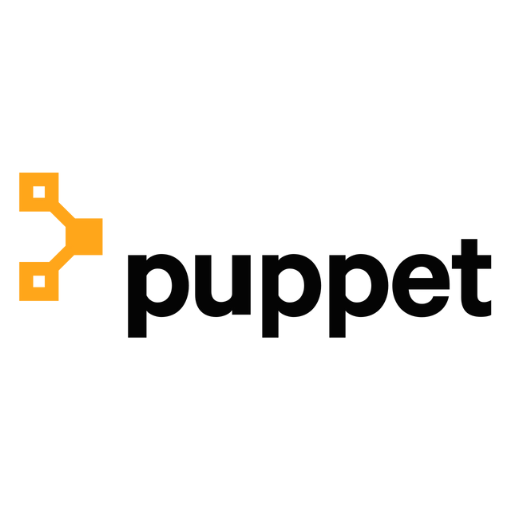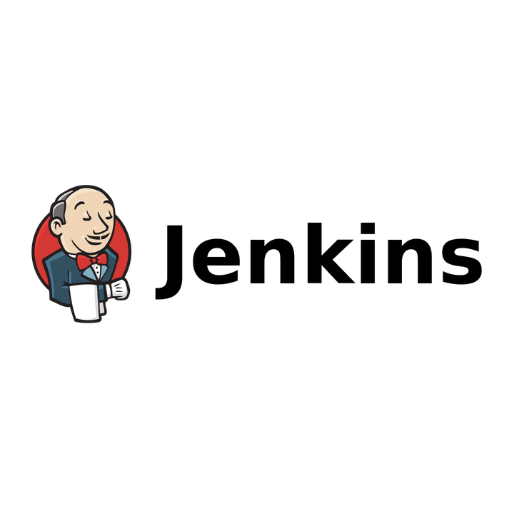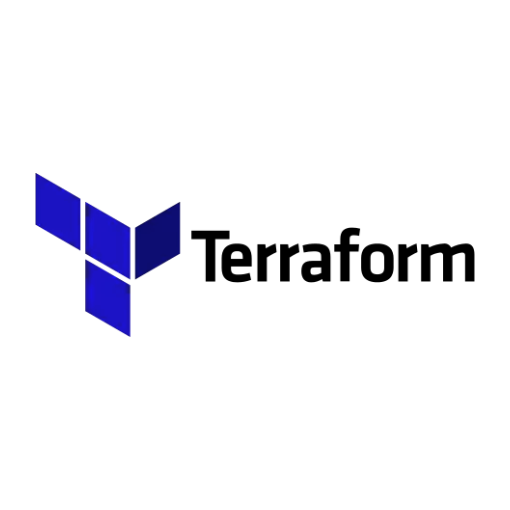Best IAC Tools Shortlist
Here’s my shortlist of the best IAC tools:
Our one-on-one guidance will help you find the perfect fit.
If your team is struggling to maintain consistency across environments or wasting time troubleshooting manual configuration errors, you’re probably looking for a better way to manage your infrastructure. Maybe you’ve run into issues with drift between dev and prod, or you're deploying updates with tools that don’t scale well. These problems slow down delivery and create unnecessary risk.
Infrastructure as Code (IaC) tools help you define, provision, and manage your infrastructure in a repeatable, version-controlled way. Whether you're coordinating across multiple teams or cloud platforms, these tools let you automate changes, reduce human error, and enforce standards with every commit.
I've worked with engineering teams who needed to bring order to chaotic environments and improve how they deploy and manage infrastructure. In this guide, I’ll share tools that stand out for their flexibility, reliability, and ability to support scalable infrastructure workflows.
Why Trust Our Software Reviews
We’ve been testing and reviewing SaaS development software since 2023. As tech experts ourselves, we know how critical and difficult it is to make the right decision when selecting software. We invest in deep research to help our audience make better software purchasing decisions.
We’ve tested more than 2,000 tools for different SaaS development use cases and written over 1,000 comprehensive software reviews. Learn how we stay transparent & check out our software review methodology.
Best IAC Tools Summary
This comparison chart summarizes pricing details for my top IAC tools selections to help you find the best one for your budget and business needs.
| Tool | Best For | Trial Info | Price | ||
|---|---|---|---|---|---|
| 1 | Best for security scanning | Free plan available + free demo | From $350/month | Website | |
| 2 | Best for containerization | Free plan available | From $11/user/month (billed annually) | Website | |
| 3 | Best for configuration automation | 60-day free trial | From $59/node/year (billed annually) | Website | |
| 4 | Best for large-scale deployments | Free trial available | From $120/node/year (billed annually) | Website | |
| 5 | Best for virtualized development | Not available | Free to use | Website | |
| 6 | Best for integrated DevOps lifecycle | 30-day free trial + Free demo | From $19/user/month | Website | |
| 7 | Best for continuous integration | Not available | Free to use | Website | |
| 8 | Best for container orchestration | Not available | Free to use | Website | |
| 9 | Best for GCP resource management | Not available | Free to use | Website | |
| 10 | Best for multi-cloud support | Free plan available | From $20/user/month (billed annually) | Website |
-

Docker
Visit WebsiteThis is an aggregated rating for this tool including ratings from Crozdesk users and ratings from other sites.4.6 -

Pulumi
Visit WebsiteThis is an aggregated rating for this tool including ratings from Crozdesk users and ratings from other sites.4.8 -

GitHub Actions
Visit Website
Best IAC Tool Reviews
Below are my detailed summaries of the best IAC tools that made it onto my shortlist. My reviews offer a detailed look at the key features, pros & cons, integrations, and ideal use cases of each tool to help you find the best one for you.
Aikido Security is a centralized platform designed for securing code, cloud, and runtime environments. It's primarily used by industries like FinTech and HealthTech to perform critical security functions such as IaC scanning and malware detection.
Why I picked Aikido Security: It excels in providing security scanning through features like open-source risk prevention and secrets detection. Aikido's static code analysis and container image security set it apart from other tools. Its AI capabilities for automated fixes ensure that security vulnerabilities are managed efficiently. You can rely on it to focus on significant issues without overwhelming alerts.
Standout features & integrations:
Features include IaC scanning that identifies misconfigurations early, static code analysis for thorough vulnerability checks, and secrets detection to prevent unauthorized access. These capabilities ensure your environment remains secure throughout the development process.
Integrations include cloud providers, Git systems, compliance tools, messaging apps, task managers, and CI/CD systems.
Pros and cons
Pros:
- Focused on significant security issues
- AI-driven automated fixes
- Centralized security management
Cons:
- Potential for high alert volume
- Limited to specific industries
New Product Updates from Aikido Security
Aikido Security's Azure Support and Multi-Cloud Search
Aikido Security's update introduced Azure support and multi-cloud search capabilities to its CSPM offering, enhanced by Zen LLM tracking for NodeJS and Python, alongside improved file-type scanning support. For more details, visit the Aikido Changelog.
Docker is a containerization platform that enables developers to build, share, and run applications efficiently across various environments. Its main users are developers and organizations looking to streamline application development and deployment processes.
Why I picked Docker: It facilitates containerization through features like rapid environment setup and integration with popular development tools. Docker Build Cloud reduces build times, while Docker Hub manages container images for collaboration. Security is enhanced with Docker Scout, providing insights for compliance and security issues. These features make Docker ideal for containerization needs.
Standout features & integrations:
Features include rapid environment setup, allowing quick creation and containerization of applications. Image management through Docker Hub facilitates collaboration among teams. Security insights are provided by Docker Scout to help manage compliance issues.
Integrations include VS Code, CircleCI, GitHub, Azure, Google Cloud Platform, Amazon Web Services, Jenkins, Kubernetes, Bitbucket, and GitLab.
Pros and cons
Pros:
- Strong community support
- Rapid container setup
- Extensive image library
Cons:
- Requires Docker-specific skills
- Limited to containerized apps
Chef is a DevOps automation platform that focuses on configuration management, application delivery, and security compliance. It's used by IT teams and enterprises that need to automate infrastructure management and maintain compliance across cloud environments.
Why I picked Chef: It excels in configuration automation with features like Chef Infrastructure Management and Chef App Delivery. Chef's focus on security compliance and a DevSecOps approach helps you manage risks effectively. The tool also offers edge management capabilities for diverse environments. These features make Chef suitable for organizations seeking comprehensive configuration automation.
Standout features & integrations:
Features include configuration management that automates infrastructure setup and maintenance. Chef App Delivery streamlines the application deployment process across various environments. Security compliance features ensure that your systems adhere to necessary standards and reduce vulnerabilities.
Integrations include AWS, Microsoft Azure, Google Cloud Platform, VMware, Red Hat, Slack, Splunk, Datadog, ServiceNow, and Okta.
Pros and cons
Pros:
- Supports diverse environments
- Comprehensive configuration management
- Strong security compliance focus
Cons:
- Requires DevOps expertise
- Limited out-of-the-box features
Puppet is a configuration management tool designed to automate the deployment and management of infrastructure. It's primarily used by system administrators and IT professionals in organizations that need to manage large-scale server environments.
Why I picked Puppet: It excels in handling large-scale deployments with features like desired state configuration and automated enforcement. You can manage thousands of nodes with ease, ensuring consistency across your infrastructure. Puppet's robust reporting helps you track changes and compliance. Its declarative language simplifies the configuration process, making it easier to maintain systems over time.
Standout features & integrations:
Features include desired state configuration, which ensures that your systems remain consistent. Automated enforcement helps you maintain compliance by automatically correcting any deviations. Puppet's robust reporting tools provide insights into your infrastructure's state and changes over time.
Integrations include AWS, Microsoft Azure, Google Cloud Platform, VMware, Red Hat, ServiceNow, Splunk, Slack, GitHub, and GitLab.
Pros and cons
Pros:
- Declarative language for configuration
- Handles large-scale deployments efficiently
- Strong compliance enforcement
Cons:
- Requires infrastructure knowledge
- Limited flexibility in configurations
Vagrant is a tool used for building and managing virtualized development environments. It's popular among developers and IT professionals who need consistent development setups across multiple platforms.
Why I picked Vagrant: It provides virtualized development environments that help eliminate the 'works on my machine' problem. With features like easy box management and multi-machine setups, Vagrant supports the creation of complex environments. You can automate the setup of development environments with simple configuration files. This makes Vagrant a go-to choice for teams needing reliable and repeatable development environments.
Standout features & integrations:
Features include the ability to create and manage environments with simple configuration files. Vagrant supports multi-machine setups, allowing you to simulate complex infrastructure. It also offers a wide range of pre-configured environments to get your team started quickly.
Integrations include VirtualBox, VMware, Docker, Hyper-V, AWS, Google Cloud, Azure, Libvirt, Parallels, and DigitalOcean.
Pros and cons
Pros:
- Simple configuration files
- Consistent development environments
- Supports multiple virtualization providers
Cons:
- Requires understanding of virtualization
- Can be resource-intensive
GitLab is a single application for the entire DevOps lifecycle. It provides a unified experience for various activities involved in software development, such as version control, issue tracking, continuous integration, and deployment. The fact that it serves as an all-in-one package for multiple aspects of a project lifecycle positions it well for the 'best for' statement.
Why I Picked GitLab:
I chose GitLab for its comprehensive suite of tools that support all stages of the DevOps lifecycle. Its uniqueness lies in its ability to offer features like issue tracking, CI/CD pipelines, and more within a single application. This makes it stand out amongst other tools. Furthermore, my judgment of GitLab as the best tool for a comprehensive package of features is derived from its holistic approach to project management.
Standout features and integrations:
GitLab's standout features include built-in continuous integration and continuous deployment, auto DevOps to automate the entire DevOps lifecycle, and comprehensive issue tracking and project management tools.
GitLab integrates seamlessly with a multitude of tools, such as Kubernetes, Jira, Slack, and more. These integrations enhance its capabilities and offer extended versatility.
Pros and cons
Pros:
- Offers a wide range of integrations
- Provides robust CI/CD capabilities
- All-in-one tool for the entire DevOps lifecycle
Cons:
- User interface could be more intuitive
- Can be overwhelming for beginners due to its comprehensive features
Jenkins is an open-source automation server designed to facilitate continuous integration and delivery for software development. It's widely used by developers and DevOps teams to automate the building, testing, and deployment of applications.
Why I picked Jenkins: It provides continuous integration capabilities that help automate repetitive tasks in the software development lifecycle. The extensive plugin ecosystem allows you to customize Jenkins according to your needs. Its easy setup and configuration make it user-friendly for teams of all sizes. Jenkins supports distributed builds, which enhance performance by using multiple machines.
Standout features & integrations:
Features include a vast plugin ecosystem that offers customization to fit your development needs. Jenkins supports distributed builds, allowing you to use multiple machines to speed up your build process. Its easy setup and configuration make it accessible for teams of various sizes.
Integrations include GitHub, GitLab, Bitbucket, Docker, Maven, Gradle, Slack, JIRA, AWS, and Azure.
Pros and cons
Pros:
- Customizable build processes
- Supports distributed builds
- Extensive plugin ecosystem
Cons:
- Limited UI customization
- Requires maintenance and updates
Kubernetes is an open-source platform designed for automating the deployment, scaling, and operation of application containers. It's mainly used by IT teams and developers who need to manage containerized applications across a cluster of machines.
Why I picked Kubernetes: It provides effective container orchestration with features like automated scheduling and self-healing. You can automatically scale your applications based on demand, which is crucial for handling traffic spikes. Kubernetes' ability to roll out updates with zero downtime makes it reliable for production environments. Its extensive support for various configurations adds flexibility to your team's workflow.
Standout features & integrations:
Features include automated scheduling that optimizes resource use across a cluster. Self-healing capabilities automatically restart failed containers to maintain application health. Kubernetes also supports rolling updates, allowing you to deploy changes without downtime.
Integrations include Docker, Prometheus, Grafana, Helm, Istio, Jenkins, GitLab, Fluentd, Elastic Stack, and Linkerd.
Pros and cons
Pros:
- Extensive configuration options
- Handles traffic spikes efficiently
- Supports zero downtime updates
Cons:
- Requires containerization knowledge
- Complex setup process
Google Cloud Deployment Manager is a service offered by Google that allows you to specify all the resources needed for your application in a declarative format using yaml. This service facilitates the consistent deployment of resources on Google Cloud, justifying its position as the go-to tool for resource deployment on the Google Cloud Platform.
Why I Picked Google Cloud Deployment Manager (GCP):
When selecting this tool, I prioritized its native integration with Google Cloud Platform (GCP) services. As an intrinsic part of GCP, Deployment Manager stands out for its capacity to streamline the deployment process within the Google Cloud ecosystem. Thus, I chose it for its aptitude in effectively modeling and deploying resources to Google Cloud.
Standout features and integrations:
Features include composite types and template language flexibility, supporting both Python and Jinja2.
Integrations include various Google Cloud Services such as Compute Engine, Cloud Storage, and BigQuery, ensuring a comprehensive management solution within the Google Cloud ecosystem.
Pros and cons
Pros:
- Supports both Python and Jinja2 for templates
- Provides consistent deployment of resources
- Excellent integration with GCP services
Cons:
- Deployment changes might require significant time to apply
- Limited to Google Cloud Platform
Terraform is an open-source infrastructure as code tool that enables you to build, change, and version infrastructure safely and efficiently. It's mainly used by DevOps engineers and IT professionals who need to manage infrastructure across multiple cloud providers.
Why I picked Terraform: It offers multi-cloud support, allowing you to manage resources across different cloud platforms with a single workflow. Features like infrastructure as code and state management ensure that your configurations are consistent. Terraform's modular architecture allows you to reuse code, making it flexible for complex deployments. Its ability to handle dependencies simplifies resource management.
Standout features & integrations:
Features include infrastructure as code, which allows you to define your infrastructure using a high-level configuration language. State management helps track your infrastructure's current status and changes. Terraform's modular architecture lets you create reusable configurations for different environments.
Integrations include AWS, Microsoft Azure, Google Cloud Platform, VMware, Kubernetes, DigitalOcean, Oracle Cloud, OpenStack, GitHub, and GitLab.
Pros and cons
Pros:
- Consistent infrastructure management
- Supports multiple cloud providers
- Reusable modular configurations
Cons:
- Limited GUI options
- Manual state management needed
Other IAC Tools
Here are some additional IAC tools options that didn’t make it onto my shortlist, but are still worth checking out:
- Ansible
For agentless architecture
- CloudFormation (AWS)
For AWS integration
- Octopus Deploy
For automated deployments
- Cloudify
For cloud orchestration
- Juju
For application modeling
- CFengine
For lightweight configuration management
- AWS Elastic Beanstalk
For AWS application hosting
- Spinnaker
For multi-cloud delivery
- Serverless Framework
For serverless application development
- BOSH
For release engineering
- Pulumi
For modern infrastructure as code
- Heat (OpenStack)
For OpenStack orchestration
- HashiCorp Nomad
For workload orchestration
IAC Tool Selection Criteria
When selecting the best IAC tools to include in this list, I considered common buyer needs and pain points like managing infrastructure complexity and ensuring environment consistency. I also used the following framework to keep my evaluation structured and fair:
Core Functionality (25% of total score)
To be considered for inclusion in this list, each solution had to fulfill these common use cases:
- Automating infrastructure provisioning
- Managing configuration across environments
- Ensuring infrastructure consistency
- Supporting multi-cloud environments
- Versioning infrastructure changes
Additional Standout Features (25% of total score)
To help further narrow down the competition, I also looked for unique features, such as:
- Advanced security integrations
- AI-driven analytics
- Real-time monitoring dashboards
- Customizable automation workflows
- Cross-platform compatibility
Usability (10% of total score)
To get a sense of the usability of each system, I considered the following:
- Intuitive user interface
- Easy navigation and accessibility
- Clear documentation and guides
- Minimal learning curve
- Responsive design for various devices
Onboarding (10% of total score)
To evaluate the onboarding experience for each platform, I considered the following:
- Availability of training videos
- Interactive product tours
- Access to templates and guides
- Supportive chatbots for assistance
- Webinars and live demos
Customer Support (10% of total score)
To assess each software provider’s customer support services, I considered the following:
- 24/7 support availability
- Multiple support channels
- Fast response times
- Knowledgeable support staff
- Access to community forums
Value For Money (10% of total score)
To evaluate the value for money of each platform, I considered the following:
- Competitive pricing structure
- Features offered at each price tier
- Transparent pricing details
- Discounts for long-term use
- Free trial or demo availability
Customer Reviews (10% of total score)
To get a sense of overall customer satisfaction, I considered the following when reading customer reviews:
- Overall satisfaction ratings
- Feedback on reliability and performance
- Comments on ease of use
- Specific mentions of standout features
- Reports on customer service experiences
How to Choose IAC Tools
It’s easy to get bogged down in long feature lists and complex pricing structures. To help you stay focused as you work through your unique software selection process, here’s a checklist of factors to keep in mind:
| Factor | What to Consider |
| Scalability | Can the tool handle your projected growth? Consider future infrastructure size and the ability to scale without significant performance loss. |
| Integrations | Does the tool integrate with your existing systems? Check compatibility with your cloud providers, CI/CD tools, and version control systems. |
| Customizability | How flexible is the tool in meeting your specific needs? Look for customization options that align with your workflow and infrastructure requirements. |
| Ease of use | Is the tool intuitive for your team? Evaluate the learning curve and whether the interface supports efficient navigation and task completion. |
| Implementation and onboarding | What resources are available for setup and training? Consider the availability of tutorials, support, and community forums to ease the transition. |
| Cost | Does the pricing fit your budget? Compare the cost against the features offered, and consider long-term value rather than just initial expense. |
| Security safeguards | How does the tool protect your data and infrastructure? Look for encryption, compliance with industry standards, and regular security updates. |
| Support availability | What level of support does the vendor offer? Ensure there's reliable customer service, with options like chat, email, or phone support to resolve issues quickly. |
What Are IAC Tools?
IAC tools are software solutions that automate the management and provisioning of infrastructure through code. They're generally used by IT professionals, DevOps engineers, and system administrators to ensure consistent and efficient infrastructure management.
Automation, configuration management, and scalability features help with reducing errors, speeding up deployment, and maintaining consistency. Overall, these tools simplify infrastructure management and enhance productivity.
Features of IAC Tools
When selecting IAC tools, keep an eye out for the following key features:
- Automation: Automates infrastructure provisioning and management, reducing manual errors and saving time.
- Configuration management: Ensures consistent settings across all environments, helping maintain stability and performance.
- Scalability: Allows infrastructure to grow with your needs, adapting to increased demand without performance loss.
- Integration capabilities: Connects with existing systems like cloud providers, container orchestration software, and CI/CD tools, ensuring smooth workflows.
- Version control: Tracks changes to infrastructure configurations, enabling rollback to previous states when needed.
- Security measures: Provides encryption and compliance with industry standards to protect data and infrastructure.
- Modular design: Offers reusable components for different environments, promoting flexibility and efficient resource use.
- State management: Keeps track of infrastructure status, ensuring changes are applied accurately and consistently.
- Agentless architecture: Simplifies deployment by eliminating the need for agents on each managed node.
- User-friendly interface: Facilitates easy navigation and task completion, reducing the learning curve for new users.
Benefits of IAC Tools
Implementing IAC tools provides several benefits for your team and your business. Here are a few you can look forward to:
- Consistency: Maintains uniform infrastructure settings across all environments, reducing discrepancies and errors.
- Efficiency: Speeds up deployment processes through automation, freeing up your team's time for other tasks.
- Scalability: Allows your infrastructure to grow with your business needs, adapting smoothly to increased demand.
- Security: Offers built-in security features and compliance measures to protect your data and systems.
- Flexibility: Provides modular components and integration capabilities, allowing customization to fit your unique workflows.
- Cost-effectiveness: Reduces operational costs by automating repetitive tasks and minimizing manual interventions.
- Visibility: Enhances insight into infrastructure changes and status through state management and reporting features.
Costs and Pricing of IAC Tools
Selecting IAC tools requires an understanding of the various pricing models and plans available. Costs vary based on features, team size, add-ons, and more. The table below summarizes common plans, their average prices, and typical features included in IAC tools solutions:
Plan Comparison Table for IAC Tools
| Plan Type | Average Price | Common Features |
| Free Plan | $0 | Basic automation, limited configurations, and community support. |
| Personal Plan | $5-$25/user/month | Automation, configuration management, basic integrations, and email support. |
| Business Plan | $50-$100/user/month | Advanced automation, multi-cloud support, enhanced security, and phone support. |
| Enterprise Plan | $100-$500/user/month | Full customization, priority support, dedicated account manager, and enterprise-grade security. |
IAC Tools: FAQs
Here are some answers to common questions about IAC tools:
What are your preferred tools for IaC?
Your choice of IAC tools depends on your specific needs, such as the cloud provider you use and the complexity of your infrastructure. Popular options include Terraform for multi-cloud environments, AWS CloudFormation for seamless AWS integration, and Azure Resource Manager for Microsoft Azure. Each tool offers unique features to manage and secure cloud infrastructure effectively.
Which approach is most effective for managing secrets used in infrastructure as code IaC tools?
Managing secrets in IAC tools requires careful planning. Use access controls to limit who can view and edit secrets. Avoid hard-coding secrets in your code, and instead, use secure storage solutions. Regularly rotate secrets and monitor logs for unauthorized access to maintain security.
How do I ensure compliance with IAC tools?
Compliance with IAC tools involves using templates that adhere to industry standards and regulations. Regular audits and automated compliance checks can help ensure your infrastructure remains compliant. It’s essential to stay updated with the latest compliance requirements and adjust your configurations accordingly.
How do I troubleshoot issues in IAC deployments?
Troubleshooting IAC deployments can involve checking logs for errors, reviewing configuration files for mistakes, and ensuring that all dependencies are correctly defined. Utilize community forums and documentation for guidance. Consistent testing and validation can prevent deployment issues from occurring.
How do I manage infrastructure drift with IAC?
Infrastructure drift occurs when live infrastructure deviates from the code-defined state. Use IAC tools’ built-in features to detect and correct drift. Regularly run checks to compare your infrastructure against the desired state and apply changes as needed to maintain consistency.
What's Next?
Boost your SaaS growth and leadership skills.
Subscribe to our newsletter for the latest insights from CTOs and aspiring tech leaders.
We'll help you scale smarter and lead stronger with guides, resources, and strategies from top experts.
























